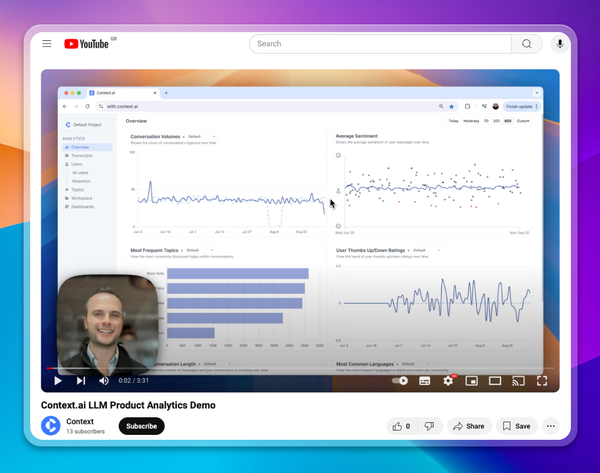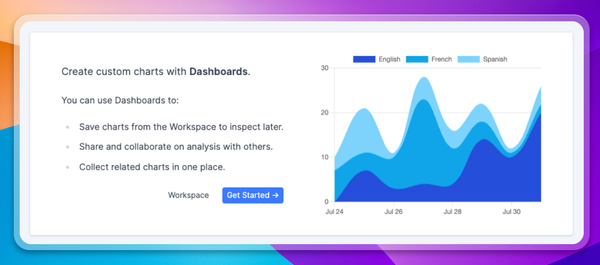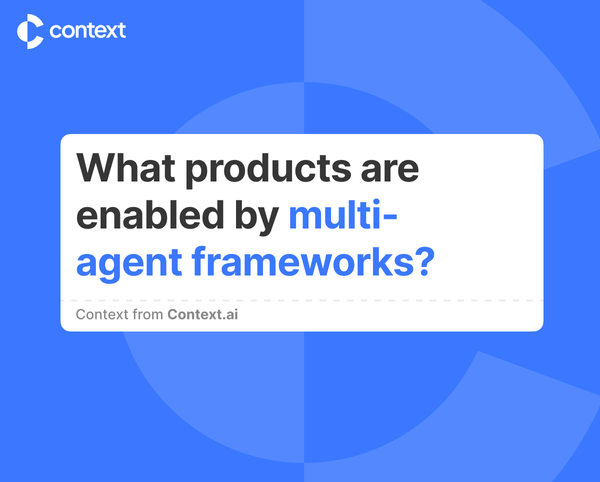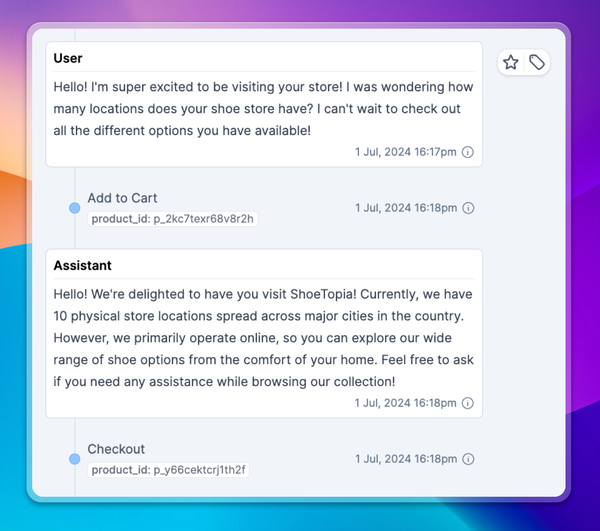Comparing multi-agent frameworks

There’s a more powerful way to use LLMs in your applications: multi-agent frameworks.
Most of us are familiar with making calls to an LLM directly, or using techniques like RAG to increase relevance and context that LLMs have. These approaches let you access human-like reasoning in your application, but mirror the behavior of talking to a single generalist “person”. The insight of multi-agent frameworks is that they simulate a team, with a mix of generalists and specialists, that collaborate to accomplish some task. These agents are basically loops that can use LLM outputs to call other software tools (like fetching data), and feed results back into an LLM until the high-level objective is achieved. They’re especially useful when:
- You’re not sure what tools you’ll need ahead of time (i.e. depending on some user input, you may need to do RAG, a web search, or a combination of both, or something else)
- The LLM might need a few tries to get something right, and correct answers can be verified without an LLM (like writing functional executable code).
If you’re going to use a multi-agent approach, you could roll your own framework—but for most, using an existing one makes the most sense. To help make the right call, let’s take a look at the leading multi-agent frameworks, and some of the key pros and cons of each.
AutoGen
Pros:
- Well-established: AutoGen has a very active community, which is great for developers seeking support and collaboration.
- Customizable Agents: It also offers customizable agents that can integrate LLMs, tools, and human feedback, making task execution highly flexible.
Cons:
- Complexity: It's a fairly complex framework, which may be a challenge for new users, requiring a steep learning curve to effectively utilize its features.
- Less Structured: Some developers might find AutoGen less structured compared to other frameworks, which could impact the ease of implementation.
Best for: Developers that value community-driven support, and want a very robust framework for complex, large-scale LLM applications that integrate multiple agents, tools, and human feedback. It excels in environments demanding dynamic, customizable agent interactions across various application domains. Learn more at https://microsoft.github.io/autogen/.
MetaGPT
Pros:
- Complex Agent Interactions: MetaGPT excels in supporting complex interactions among agents, making it suitable for sophisticated multi-agent tasks.
- Rich Library: It also comes with a rich library of predefined agents, enabling a range of functionality without the need for extensive custom development.
Cons:
- Asyncio Dependency: Heavily relies on asyncio, which can be good for network heavy I/O, but otherwise has some fairly severe limitations compared to other python-native parallel processing approaches.
- Limited Generalizability: The roles of agents in MetaGPT may lack generalizability, potentially restricting its use in scenarios that require highly customizable agents.
Best for: Projects that need sophisticated multi-agent interactions and predefined complex behaviors. Ideal for network-heavy asynchronous operations and projects that demand advanced collaboration capabilities without heavy customization. Learn more at https://www.deepwisdom.ai/
CrewAI
Pros:
- Production Focus: CrewAI is designed with production use in mind, featuring clean code and a focus on practical application.
- Agent Delegation: Emphasizes agent delegation, allowing for a structured approach to task distribution among agents.
Cons:
- Re-delegation Limits: Limits on re-delegation and the use of external agents can constrain the flexibility in how tasks are assigned and executed.
- Data Collection: Collects anonymized usage data, which might raise privacy concerns for some teams.
Best for: Production-ready applications where structured task delegation and clear, reliable execution are crucial, and where baked-in framework analytics are a non-issue. Learn more at https://www.crewai.com/.
LangGraph
Pros:
- Specialized Agent Focus: Enables the division of complex problems into manageable tasks targeted by specialized agents, enhancing efficiency.
- Graph Representation: Uses a graph representation for agent connections, offering a clear and scalable way to manage multi-agent interactions.
Cons:
- Complex Setup: The graph-based setup might be complex for developers unfamiliar with graph theory or those who want a more straightforward implementation.
- Focused Task Limitation: While excelling in focused tasks, it may not be as effective for broad or highly interconnected tasks that require extensive agent collaboration beyond simple graph structures.
Best for: Handling complex task interdependencies – its graph-based approach is great for visualizing task interdependencies and agent relationships. Learn more at https://python.langchain.com/docs/langgraph/.
AutoGPT
Pros:
- Memory and Context Management: Like AutoGen, AutoGPT also excels in areas like memory and context, providing an advantage in LLM applications requiring these capabilities.
Cons:
- Visual Builder Dependency: Relies on visual builders for application design, which might limit flexibility for teams that would rather define their design in code.
Best for: Developers that want to utilize visual design tools for easy construction and management of multi-agent systems, with a focus on memory and context management in LLM use. Learn more at https://autogpt.net/.
Conclusion
Ultimately, the decision of whether to use a multi agent framework, and if so, which, will depend on the specifics of your use case. But regardless of which one you pick, to productionize your use case, you’ll need to think about how to evaluate this “team” of LLM agents. Doing so yourself can be prohibitively complicated, especially in cases where agents are spinning up other agents on the fly, some of whom have access to tools that can bring in context you never planned for in your LLM application. Without a strong evaluations framework, it can be impossible to know if your application is working properly, or even improving as you make updates. Luckily, Context.ai is thinking about it so you don’t have to - be on the lookout for our multi-agent eval tooling and frameworks, and happy building.





